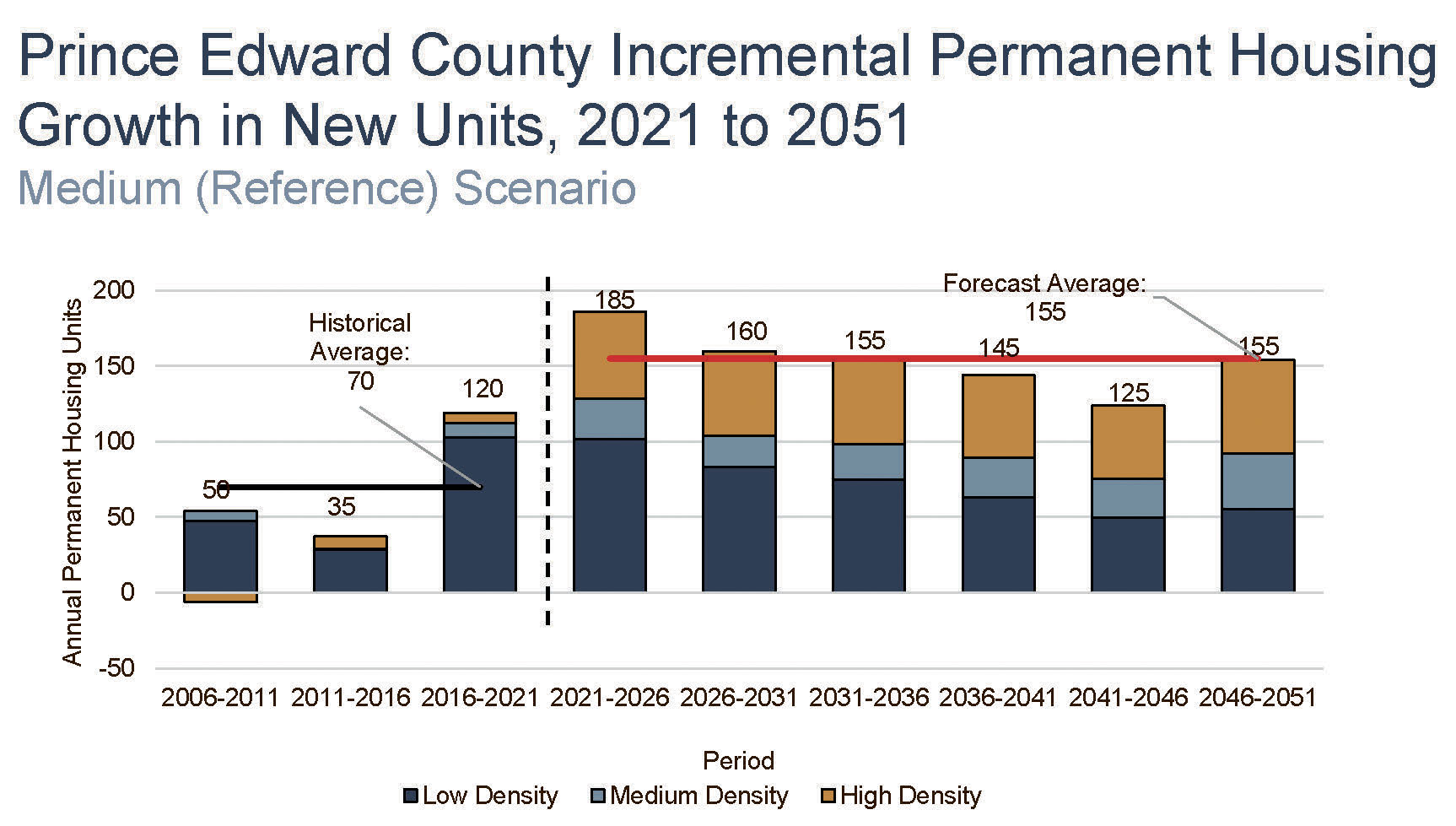County News
Cold water

Growth analysis undercuts infrastructure expansion plans
managing director of Watson and Associates– the firm retained by the County and other regional municipalities to forecast population growth for the next 30 years. According to Jamie Cook’s analysis, population growth and new homebuilding are likely to fall well short of the forecasts driving the current infrastructure renewal underway in Prince Edward County.
According to Watson, instead of adding almost 40,000 people to the County, as forecast in Shire Hall’s current study looking at a regional water system, the entire County population is projected to grow by fewer than 9,700 people over the next 30 years.
“There is a risk of overstating growth when you only look at the development pipeline,” explained Cook. “It is one of the reasons we were retained to look at the regional picture.”
Watson’s analysis seems likely to trigger a reassessment of Shire Hall’s big water, roads and long-term care plans.
According to Watson’s analysis, if history is a guide, the region that includes Prince Edward County, Belleville, Hastings and Quinte West may not grow at all. Cook’s presentation indicates that if historical trends are to be relied upon, the population will be flat until 2041 and then drift slightly downward.
Nevertheless, Cook contends structural pressures give him confidence that the region’s population will grow at a rate of under one per cent over three decades.
He says the region will continue to see migration from other areas of the province—mostly retiring folks from the city. While he sees a stabilization in the younger age population—as opposed to a steady decline for the past few decades—it is unlikely to alter the broad demographic in this region.
Cook points to positive signs of economic opportunity driven by work-at-home, hybrid work, as well as reshoring of some industries. Still, he says the region will struggle to attract a labour force until new housing comes along that is affordable.
Cook also notes other pressures likely to dampen population growth over the forecast period— mostly our age. The cohort of folks aged 75 and older in the County is growing four times faster than the overall population. Those aged 85 and older are growing even faster. According to Cook, this will continue to put downward pressure on population growth in the region.
On housing, Watson is projecting an average of 825 new homebuilding starts per year across the region to 2051, with Prince Edward County averaging 155 starts per year—for a total of 4,620 units.
To meet the requirements of the County’s aging demographic, more than half of new homebuilding should be medium or high-density residential buildings.
Watson’s projections contrast sharply with assumptions Shire Hall has used to drive infrastructure renewal. Cook’s presentation left many council members confused. The County is spending hundreds of millions of dollars on expanding waterworks in anticipation of a massive wave of new homebuilding. Watson’s analysis pours cold water on these plans.
Councillor David Harrison noted that Watson’s numbers varied greatly from those used to justify the expansion of waterworks in Wellington and the extension of the water supply to Picton.
“Your numbers look reasonable to me,” said Harrison, attempting to reconcile with Watson’s forecast and Shire Hall’s projections.
Cook explained that when municipalities focus on their development pipeline, they risk overstating growth.
“If you just look at the plans from local areas, it adds up to a big number,” explained Cook. “Someone has to look at it from a topdown perspective and put some context into what is possible. It is one of the reasons we were retained—to look at the regional picture.”
He said there is a risk in simply looking at what developers tell you they will build.
“You have to moderate this with a top-down perspective,” said Cook. “Developers hate when I say this—they want me to bring me down to their level. I will keep, however, bringing them to the broader picture—because it has to add up.”
Councillor Chris Braney noted that the housing market in Prince Edward County and the GTA had cooled considerably. He wanted to know if the recent trend had been factored into Watson’s analysis.
“Yes, we are seeing signs of softening in the labour market, and interest rates are affecting affordability,” acknowledged Cook. “There is no doubt in my mind that the lag effect of rising interest rates hasn’t kicked in yet. But when I look at the structural changes in Eastern Ontario, I am bullish. I see the anemic growth that has defined Eastern Ontario starting to change. Changes in global trade patterns, which may mean bringing jobs back to the region.”


Hmm. “If you build it they will come” may not be true after all (if it ever was).